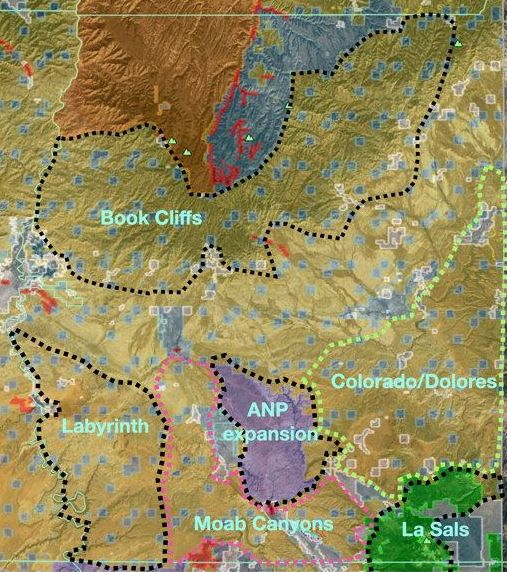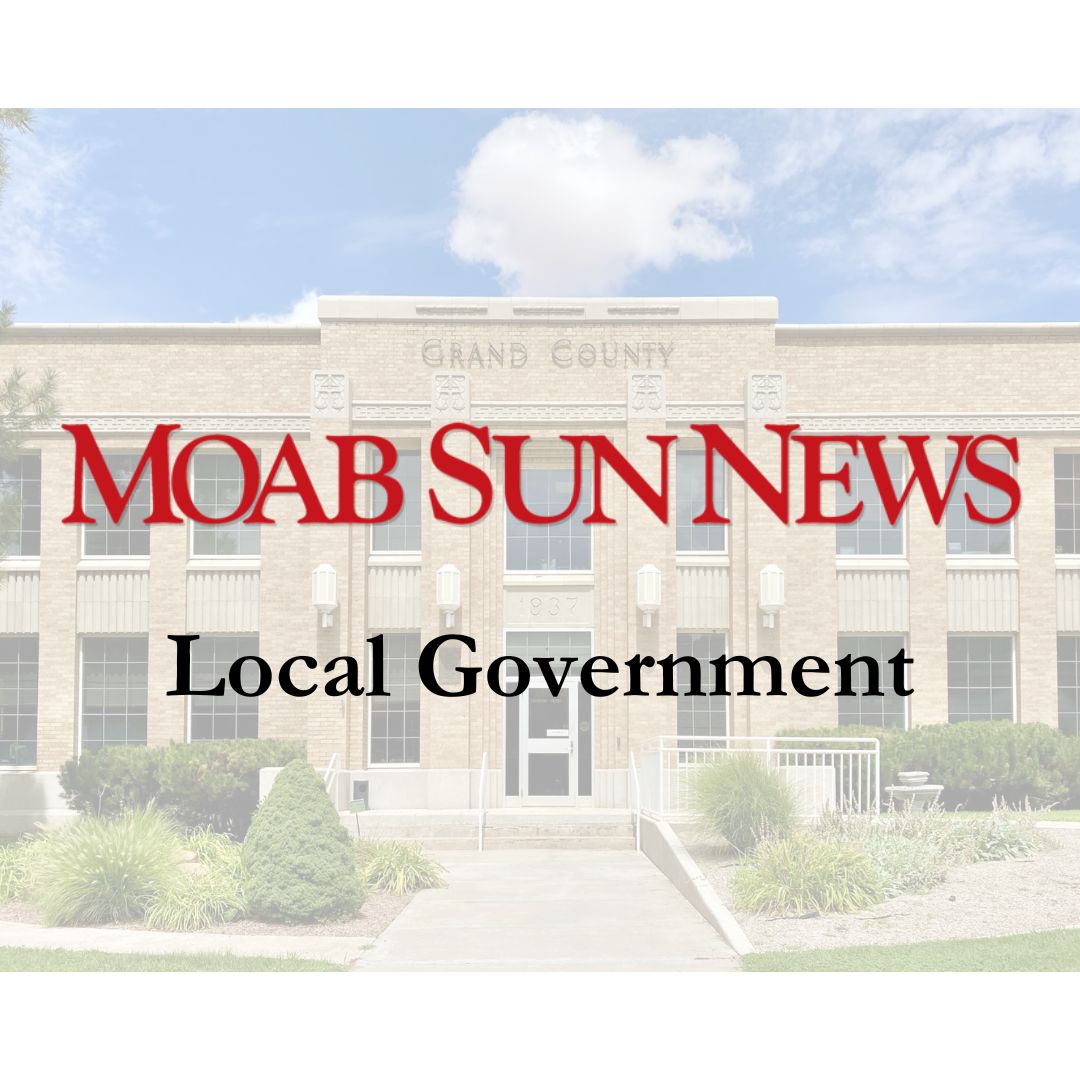The Grand County Commission is continuing to refine its vision for a public lands bill proposal, an effort begun in 2021. During a workshop on May 2, commissioners reviewed public comments received so far and discussed issues to consider in the next, more detailed draft proposal.
The county’s goals are to protect natural resources for ecologic health, for current recreators, for future generations, and for climate resilience; to balance opportunities for different kinds of recreation, specifically motorized and non-motorized; and to ensure that the Bureau of Land Management, which oversees most federal lands in the area, has enough money to adequately protect and manage them.
A committee led by Commissioner Kevin Walker has identified an approach it hopes will promote those goals: proposing areas on BLM land within the county to be designated as National Conservation Areas. NCAs do not entail any specific regulations or protections—though usually, new extraction leases are prohibited—but rather define a boundary to which management strategies can be applied. (Existing extraction operations are usually grandfathered in to a new NCA designation.) NCAs may include or even feature recreational motorized use. For example, the McInnis Canyons National Conservation Area in Colorado is just over the state line along Interstate 70, and it contains the Rabbit Valley motorized use area. Other designations, such as Wild and Scenic Rivers, can overlap with NCAs.
Within the nationwide BLM system for allocating funding, offices managing areas that include NCAs may have a better chance of receiving more money than offices managing BLM lands with no designations.
Walker said that in discussions with the BLM, he often hears that they don’t have the funding to hire the staff they need.
“The story of the BLM is that, ‘we’d like to do a better job of managing the spectacular BLM lands within Grand County’—they know that they’re every bit as great as what’s inside Arches National Park—but they only have a fraction of the budget… and as more and more people come to visit, that becomes more and more of a problem,” he said.
Grand County has no authority to enact the designation of federal lands, but it hopes to see its proposals become part of congressional legislation. Congressman John Curtis has expressed interest in supporting a proposal developed with broad local public support. The John D. Dingell Act, passed in 2019, included an Emery County lands bill developed locally, offering a recent precedent for local land initiatives being absorbed into federal legislation.
To establish public support, the commission is gathering public input through multiple rounds of refining its proposal.
“This process was very much inspired by the typical [National Environmental Policy Act] process that the Forest Service or BLM might go through, where they have a round of scoping and then they develop some alternatives and then they have another round of public input and then finally, a decision,” Walker explained.
The first round of comments was made mainly through emails to the committee and through an online survey, available at the county’s website, grandcountyutah.net, under the “Public Lands Bill” tab at the top of the page. The page shows a rough map outlining the general location of five possible NCAs: one in the Book Cliffs area; one including heavily visited canyons close to Moab; a Labyrinth NCA including Green River canyons; a Colorado and Dolores NCA; and another in the La Sal Mountains. The proposal also includes an extension of Arches National Park to incorporate Dry Mesa and Lost Springs Canyon, on the existing east and north boundaries of the park. The committee received 92 survey responses as well as many emailed comments.
Commissioner Sarah Stock reviewed highlights from the survey responses. Over 50 were supportive of the concept of creating new NCAs. Stock quoted one comment:
“These proposed NCA landscapes deserve protection to ensure that they remain in an unaltered state for future generations, provide a buffer against the impacts of climate change, and ensure that there are always places for solitude and solace for Grand County’s citizens and visitors alike.”
Eighteen survey respondents were opposed to NCAs, concerned that they would put too many restrictions on public lands, harming the livelihoods of people who work in extractive industries or agriculture and limiting possibilities for economic diversification in the county.
“The impact to Grand County citizens that make a living with the land and natural resources is very vague and almost unlimitedly negative. Once again I do not support the vast scope of this proposal,” one comment read.
Survey questions were open-ended, and many commenters offered their own ideas about what they’d like to see included in a public lands bill proposal. Many were concerned about camping, with varying viewpoints: some wanted to see dispersed camping areas closed to protect them from overuse; others wanted to preserve dispersed camping; some comments suggested making camping areas specifically oriented toward Grand County workers who live in their vehicles. Another topic of widespread concern was motorized use. Many hoped it would be further limited, and many others opposed any reduction in existing motorized use.
Other comments brought up issues not mentioned in the survey, such as concerns about e-bikes on singletrack trails and the desire to see lands returned to the Native American tribes that historically lived in the area.
The full comments are included in the commission’s May 3 agenda packet, available at the county’s website.
Commissioners also discussed more specific boundaries of the proposed NCAs, and scenarios that might involve land swaps with other entities such as the state. Once the boundaries are more clearly defined, there will be another round of public comments on the more focused version of the proposal. Visit grandcountyutah.net and click on the “Public Lands Bill” tab to stay up to date on the process.




